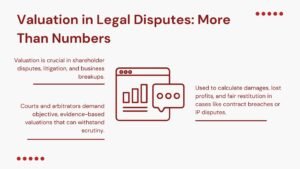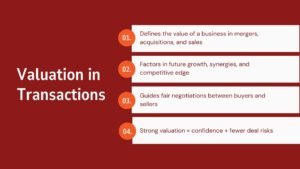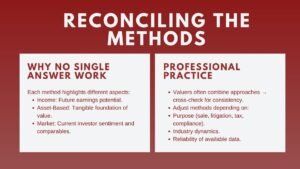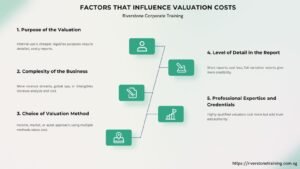Training on How to Decide Whether to Buy or Sell a Company
Training on How to Decide Whether to Buy or Sell a Company
One of the most important strategic decisions in business is the decision on whether to buy or sell a company. For investors this means deciding when to take an opportunity or sell an investment. For business owners, it must be a turning point that makes the future of the enterprise. Making this decision requires more than just intuition, but rather a structured and analytical approach based on valuation and market analysis and strategic fit.
A training program on how to decide where to buy or sell a company prepares participants with the frameworks and the tools to make such corporate decision-making course for mergers and acquisitions professionals with confidence. By combining the analysis of financial measures, industry trends and analysis of the risks, the training equips the professionals with the ability to make data-driven judgements in high-stakes situations. Ultimately, this training transforms participants into professionals capable of making informed and strategic buy-or-sell decisions that align with long-term business objectives. In an increasingly complex financial environment, where every transaction carries both opportunity and risk, having a disciplined valuation-based approach is not just advantageous — it is essential for sustainable success and value creation.
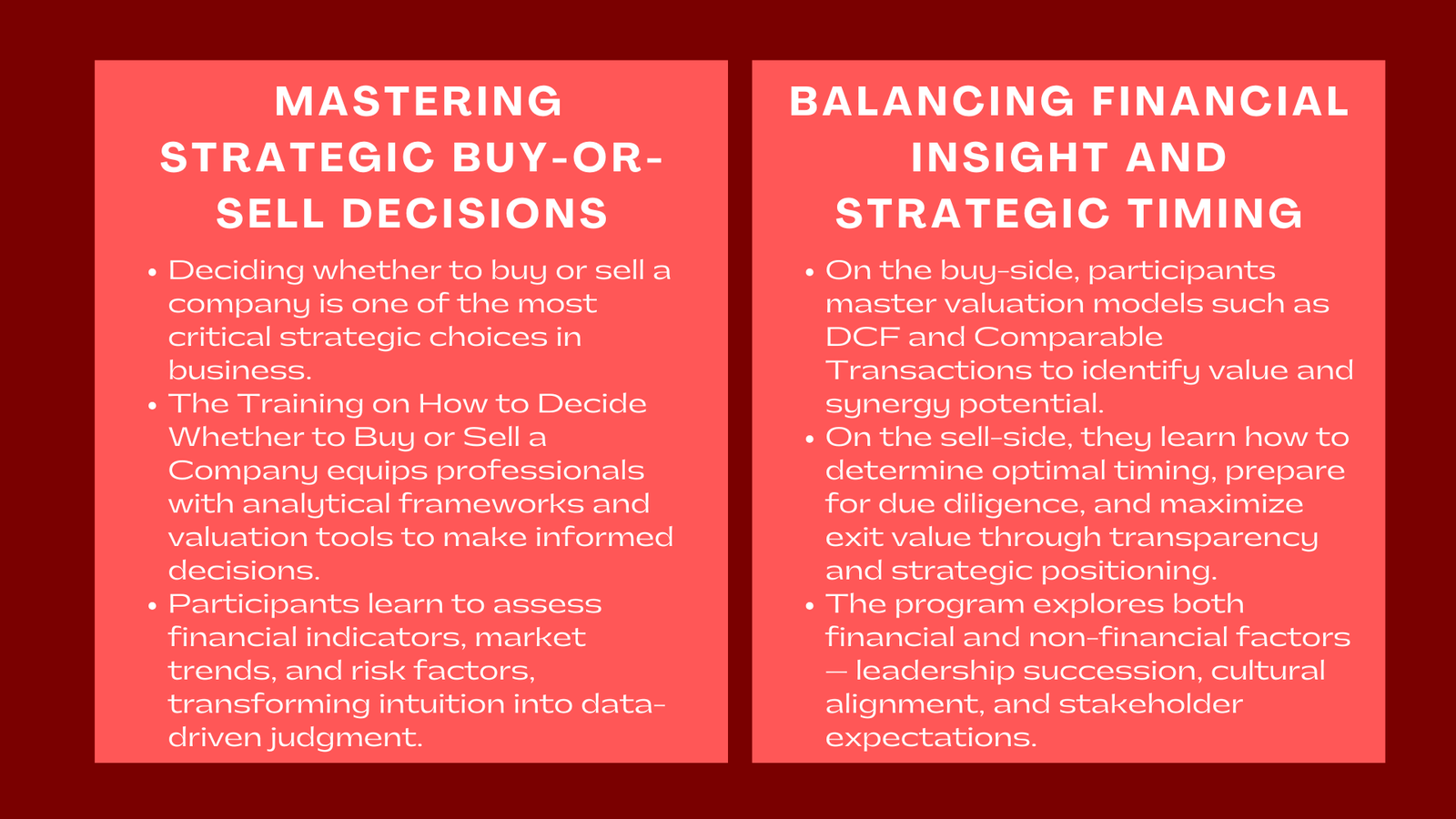
Assessing the Buy-Side: Identifying Value and Synergy
On the buy side, valuation is a crucial tool to establish whether an acquisition target has the right strategic and financial fit. From models like Discounted Cash Flow (DCF) and Comparable Transactions analysis, participants learn how to evaluate target prospects, compute intrinsic value and negotiate a reasonable price.
The training focuses on the fact that the acquisition of a company is never just about numbers, but about fit and synergy realization. However, learners can analyze how acquisitions can lead to improved market position, cost efficiencies or speeded innovation. They also learn how to assess cultural fit, the practicality of integration and how to create value after the acquisition.
By using strategic analysis and combining it with quantitative analysis, professionals can make determinations about what targets can bring sustainable value, as opposed to temporary gains. In essence, buy-side valuation training transforms participants into strategic dealmakers who understand that successful acquisitions depend not just on identifying value—but on creating and sustaining it through disciplined financial insight and strategic alignment.
Understanding the Sell-Side: Timing and Value Maximization
On the sell-side, timing and preparation is critical. This training helps business owners and executives to understand when selling creates optimal value. Participants are educated to analyze market conditions, industry cycles, and traffic patterns of performance of a company to find out when is the right time to divest.
The course also includes pre-sale valuation and preparing for due diligence, focusing on teaching participants how to maximize financial statements, transparency in ownership structure and also how to present a strong equity story to possible buyers. This preparation improves the bargaining power and maximizes the exit value, aligning closely with M&A valuation services Singapore for buy-side and sell-side transactions that help professionals structure deals strategically and enhance transaction outcomes.
Participants have received useful experience in how to actively engage advisors, how to structure transactions, and how to ensure confidentiality throughout the process. Ultimately, sell-side valuation training enables professionals to manage the entire divestment process strategically — from initial planning and pre-sale optimization to final negotiation and closing. Graduates of such programs emerge with the ability to transform a business exit into a strategic opportunity, ensuring that timing, transparency, and tactical execution combine to maximize shareholder returns and reinforce the company’s legacy.
Balancing Financial and Strategic Factors
Whether buy and sell company valuation training in Singapore, there needs to be a balance between both the financial and the strategic. However, training modules take participants through sensitivity and scenario descriptions in order to gain insight into the impact of varying assumptions (e.g., market growth, cost of capital, integration costs) on decision outcomes. In addition to financial modeling, participants are encouraged to consider non-financial factors that can significantly influence deal success. These include leadership succession planning, operational resilience, cultural alignment, and stakeholder expectations—all of which play critical roles in shaping the long-term value created (or destroyed) through a transaction. By understanding the interplay between financial metrics and organizational realities, professionals gain a deeper perspective on what truly drives sustainable business value.
They also consider non-financial factors such as leadership-sucession, operational risks and stakeholder interests. By the conclusion of the course, the professionals will be well-prepared to approach buy/sell decisions from a holistic perspective combining numbers with strategic long-term thinking.
Conclusion
The choice to buy or sell a company, is one of the most important in the business marketplace. Through supplemented training opportunities, learners get to learn how to blend analytical accuracy with strategic knowledge.
Understanding of valuation methods, timing of markets, negotiation tricks – triumphing in these aspects enables professionals to make thoughtfully grounded choices that mesh with financial targets while additionally considering long-term perspectives. In a capitalist economy, the ability to make the right purchases and sell the right products when necessary is business savvy. Furthermore, such training underscores that in the modern capitalist economy, success depends not only on identifying opportunities but on seizing them at the right time and for the right reasons. The ability to recognize when to buy strategically, sell wisely, or hold patiently is a hallmark of true business acumen. When professionals understand how to integrate valuation insights with broader market strategy, they elevate their role from financial technicians to strategic value creators — capable of driving sustainable growth and long-term success for their organizations.



